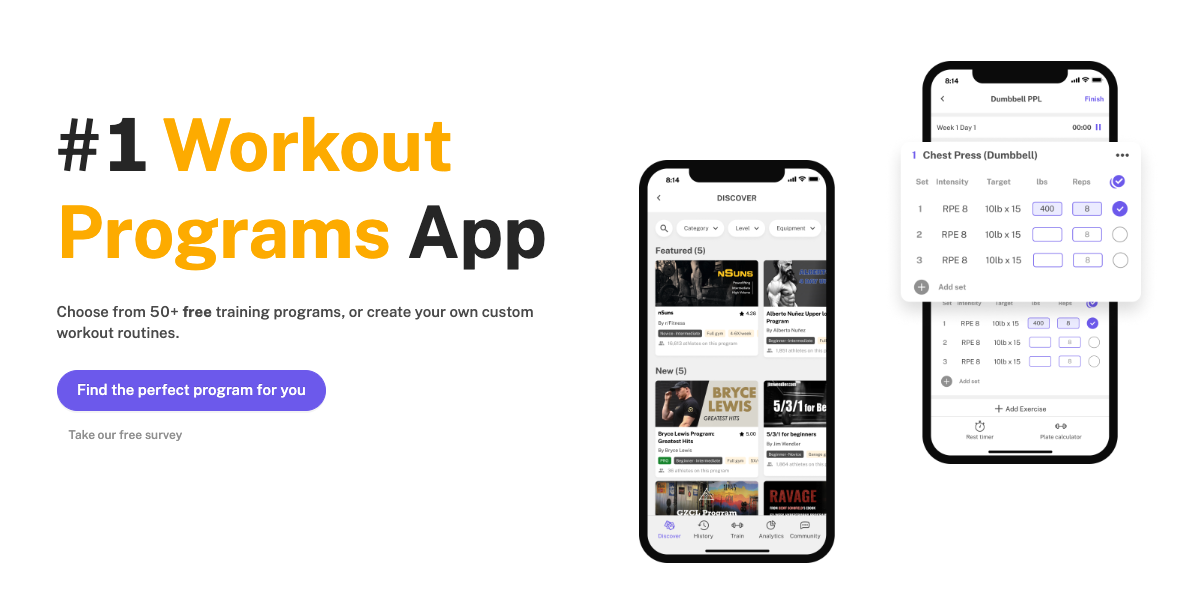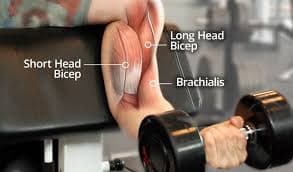Short Head Bicep Exercises | Best Guide and App
Written by The Boostcamp Editors
Master Short Head Bicep Exercises: A Complete Guide
The bicep muscle has two heads (hence the name), the short head and the long head. The short head, also known as the short head bicep, is located on the inside of the arm, near the shoulder. The long head is located on the outside of the arm, near the elbow. The truth is, when you do bicep exercises, or even pulling exercises for the back muscles, such as rowing movements and deadlifts, you'll be hitting both the long and short head of the bicep muscle group, and the long head is responsible for the peak of the muscle. However, if your goal is to specifically target and build bigger and stronger biceps, you are going to want to incorporate specific short head bicep exercises into your training routine.
The short head bicep is responsible for the thickness of the bicep, giving it that massive look especially from the front, as well as basic functions such pulling the arm towards the body (as in a curl). The short head of the bicep is activated when the arm is in a position where it is closer to the body (such as when your palms are facing your thighs). It is responsible for some pretty important functions, such as elbow flexion and muscle activation, meaning that working this head of the bicep can bring numerous benefits to your progression, including muscle growth and strength.
So how do you specifically target the short head of the bicep by curling with your elbows in front of your body?
![]()
Why Work the Short Head Bicep?
The short head bicep is an important muscle to work for two reasons. First, because it is responsible for one of the main functions of the bicep (curls), and second, because it helps to stabilize the elbow joint, making it crucial for injury prevention and proper form. Incorporating both short and long head bicep exercises is essential for optimal development and to avoid potential injuries.
This is due to the fact that most exercises that work the biceps (such as curls) place more emphasis on the long head, since it is activated when the arm is in a position where it is further away from the body. As stated above, this can leave the short head of the bicep, also known as the inner bicep, underdeveloped. However, incorporating wrist supination into different exercises such as dumbbell curls is an excellent way to emphasize and strengthen the short head of the bicep.
Don't worry, there are ways to develop the short head of the bicep, also known as the bicep curl, so it is right where you need it to be. In order to balance out the development of the two heads of the biceps, it is important to include exercises that specifically isolate the short head, rather than both of them. This can help to improve the overall appearance of the biceps, as well as improve strength and functionality, which can transfer into other lifts, specifically movements that require pulling, such as the great exercise of preacher curls and underhand grip barbell rows.

What are the Best Short Head Bicep Exercises?
Some of the best exercises for targeting the short head of the bicep include:
- Wide grip curls
- Preacher curls
- Hammer curls
- Spider curls
- Concentration curls
- Chin ups
- Seated dumbbell curls
- Standing dumbbell curls
- Drag curls
What are the Best Training Routines for Biceps?
Training biceps is certainly important, but you still need to focus on training the entire body. The last thing you want are huge biceps, but then the rest of your body is disproportionate. We recommended finding a free bodybuilding, powerlifting, or powerbuilding program on the Boostcamp App, such as Reddit PPL (Push Pull Legs), PHAT, 4-Day Upper Lower Split, or Arnold's Golden Six. All of these routines include bicep exercises in them, and you can always add or modify more bicep exercises as needed.
Don't be this guy!

Now, let's break down exactly how to do some of these short head bicep exercises, as well as discuss the volume you should be doing them at.
How to do seated dumbbell curls
Sit on a bench with your back straight and a dumbbell in each hand, palms facing forwards. Let the dumbbells hang at arm's length by your sides.
Keeping your upper arms stationary, exhale as you curl one weight forward until your palm is facing your shoulder, make sure to get a good mind-muscle connection. At the top of the curl, squeeze your biceps and hold for a count of one.
Inhale as you slowly lower the dumbbell back to the starting position. Repeat with the other arm. Continue alternating for 8-12 reps on each side.
How to do standing dumbbell curls
Stand with your feet shoulder-width apart and hold a dumbbell in each hand. Let the dumbbells hang at arm's length by your sides, with your palms facing forwards.
Keeping your upper arms stationary, exhale as you curl the weights forward until your palms are facing your shoulders. At the top of the curl, squeeze your biceps and hold for a count of one.
Inhale as you slowly lower the dumbbells back to the starting position. Repeat for 8-12 reps before switching sides.
/Verywell-34-3498604-BicepCurl01-1576-599462e7b501e800128ff42d.gif)
How to do incline dumbbell curls
Lie back on an incline bench with a dumbbell in each hand, palms facing forwards. Let the dumbbells hang at arm's length by your sides.
Keeping your upper arms stationary, exhale as you curl one weight forward until your palm is facing your shoulder. At the top of the curl, squeeze your biceps and hold for a count of one.
Inhale as you slowly lower the dumbbell back to the starting position. Repeat with the other arm. Continue alternating for 8-12 reps on each side.
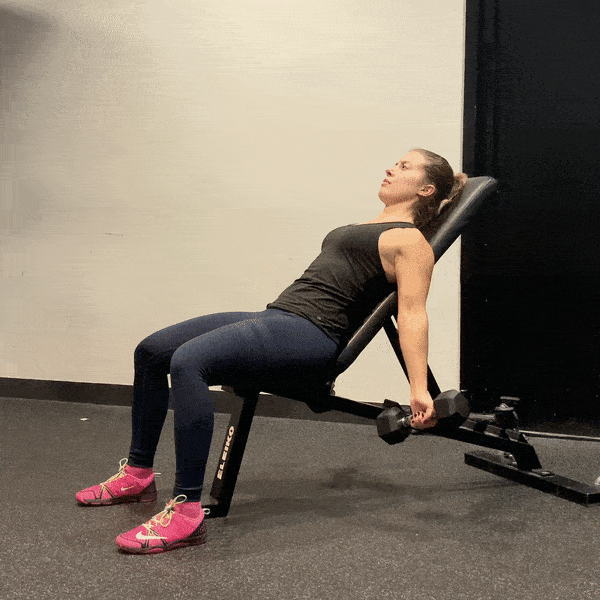
Source: https://www.strengthlog.com/
How to do concentration curls
Sit on a bench with your legs crossed and a dumbbell in your right hand, palm facing forwards. Place your elbow against the inside of your right thigh, and let the dumbbell hang at arm's length.
Exhale as you curl the weight forward, keeping your upper arm stationary. At the top of the curl, squeeze your biceps and hold for a count of one.
Inhale as you slowly lower the dumbbell back to the starting position. Repeat for 8-12 reps before switching sides.
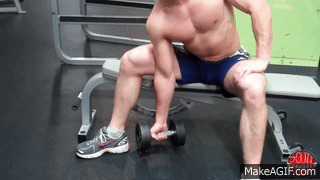
How to do hammer curls
Stand with your feet shoulder-width apart and a dumbbell in each hand, palms facing your sides. Let the dumbbells hang at arm's length by your sides, with your elbows close to your body.
Exhale as you curl one weight forward until your palm is facing your shoulder. At the top of the curl, squeeze your biceps and hold for a count of one.
Inhale as you slowly lower the dumbbell back to the starting position. Repeat with the other arm. Continue alternating for 8-12 reps on each side.
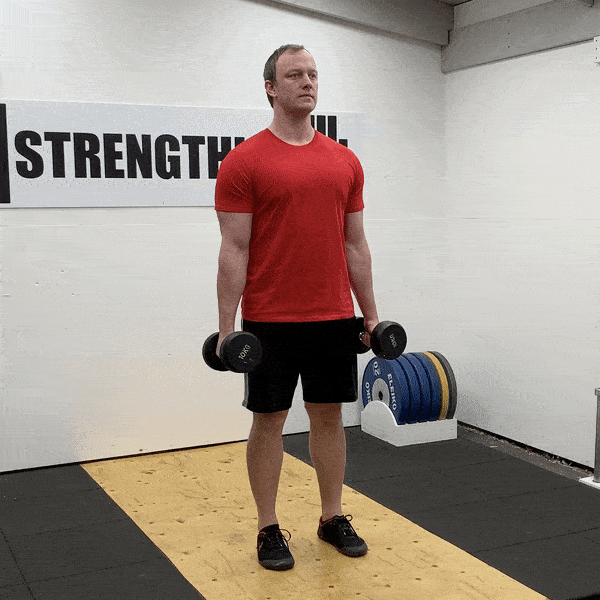
Source: https://www.strengthlog.com/
How to do a seated alternating dumbbell curls
Sit on a bench with your back straight and a dumbbell in each hand, palms facing forwards. Let the dumbbells hang at arm's length by your sides.
Keeping your upper arms stationary, exhale as you curl one weight forward until your palm is facing your shoulder. At the top of the curl, squeeze your biceps and hold for a count of one.
Inhale as you slowly lower the dumbbell back to the starting position. Repeat with the other arm. Continue alternating for 8-12 reps on each side.
How to do drag curls
Stand with your feet shoulder-width apart and hold a barbell or EZ bar with an overhand grip. Let the barbell hang at arm's length by your sides, with your palms facing forwards.
Keeping your upper arms stationary, exhale as you curl the weight forward until your palms are facing your shoulders. At the top of the curl, squeeze your biceps and hold for a count of one.
Inhale as you slowly lower the barbell back to the starting position. Repeat for 8-12 reps.
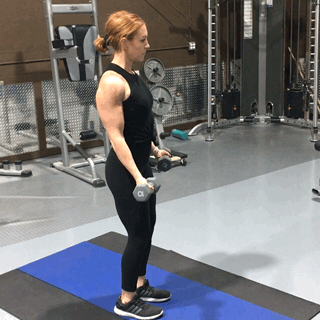
What are the Best Rep and Set Ranges to Target the Short Head of the Bicep?
For most people, the ideal rep range for building muscle is between 8-12 reps. For the short head bicep, you can do 3-4 sets of 8-12 reps on each exercise, ensuring a full range of motion. You can also incorporate things like drop sets and super sets to really make the muscle grow. You also do not want to just go through the motions when training biceps, but instead really focus on the mind-muscle connection and get a good contraction with effective bicep workouts.
How can I Include Short Head Bicep Work Into my Routine?
To develop a well rounded muscular physique, you still need to train the entire body. Therefore, you should be following workout programs. As stated in an above paragraph, we recommended finding a free bodybuilding or powerlifting program on Boostcamp App, such as Reddit PPL (Push Pull Legs), PHAT, 4-Day Upper Lower Split, or Arnold's Golden Six (modeled after Arnold Schwarzenegger's routine). All these routines are available for free on Boostcamp.
If you're looking to add some short head bicep work into your routine, there are a few different ways to do so. One option is to simply choose exercises that specifically target the short head (such as those listed above). Do them after completing the programmed workouts.
Do Pull-Ups Work the Short Head of the Biceps?
No, pull-ups do not specifically target the short head bicep. However, they do work the biceps as a whole, which is what you need to have nice looking biceps. Pull-ups are more for working the back. However, chin-ups can target the short head of the biceps fairly well.
So Should I do Chin-Ups for Biceps?
There is no definitive answer to this question, as it really depends on your goals. If you're looking to build bigger biceps, then you may want to focus more on curl-type exercises that specifically target the short head of the biceps, or the biceps as a whole, such as good form exercise like wide-grip preacher curls or reverse grip inverted rows. However, if you're looking to build a stronger back with bigger biceps as a secondary goal, then pull-ups and chin-ups may be a better option for you.
In short, there is no one exercise that is better than the other. It really depends on your goals and what you're looking to achieve, but do not be afraid to switch things up and check out some different training programs to really test your abilities and make some gains.
Where to Find a Good Program
When it comes to finding a good program to help you build up the short head of the biceps and improve overall, check out the free Boostcamp App. You can find tons of different workout routines that will truly push you to the limit, and they are made by renowned evidence-based coaches. Boostcamp also lets you create your own custom routines and log your progress, which is great for tracking your progress and making linear progression.
To maximize your gains and simplify your fitness journey, consider using Boostcamp, the last lifting app you'll ever need. Boostcamp helps you track your progress, offers customizable training programs, and provides expert guidance to ensure you get the most out of your chosen workout program whether it's linear push pull legs or upper lower or whatever you choose. Start making the most of your workouts and download Boostcamp today!
Short Head of the Biceps Wrap Up
Overall, training the short head of the biceps requires a bit more concentration and isolation than training the biceps as a whole. While standard curls do work both the long head and short head, many times the long head is emphasized more, leaving lifters with great bicep peaks but no thickness. Incorporating isolation exercises specifically targeting the short head, such as dumbbell concentration curls or barbell curls, can help to balance and strengthen this muscle for a more well-rounded bicep.
Will you be trying any of these short head bicep exercise?
Be sure to follow Boostcamp on Instagram and subscribe on YouTube!
